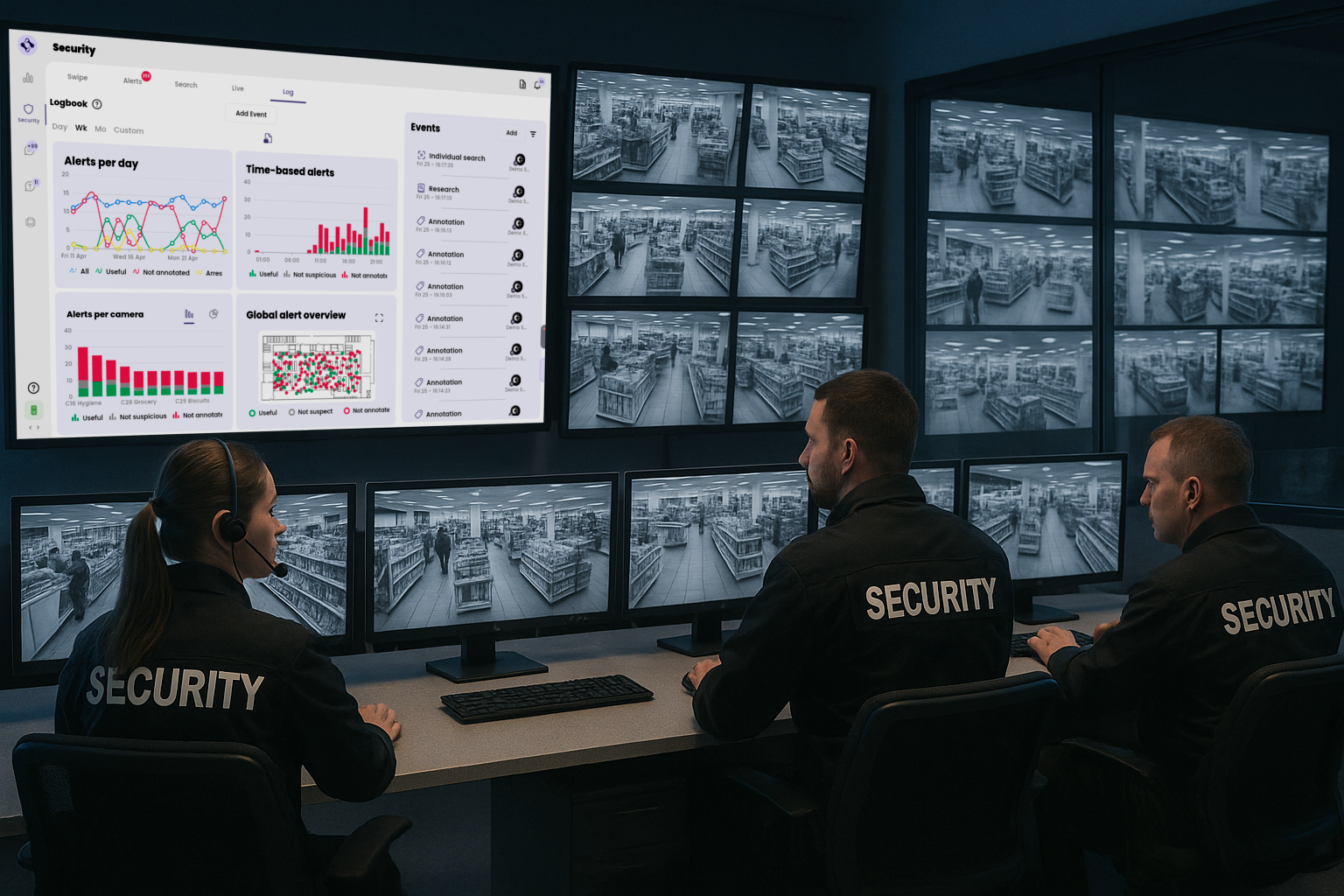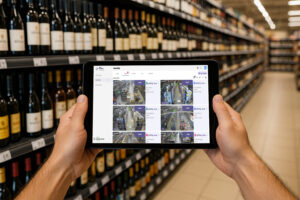Unknown shrinkage is now a critical challenge for retailers, directly impacting their profitability and operational efficiency. With advances in intelligent detection, stores now have access to precise, actionable data, transforming security into a real performance driver.
Among these solutions, key performance indicators (KPIs) play a central role. They allow for detailed analysis of activity, anomaly detection, and optimized resource allocation.
When used correctly, KPIs — such as the number of alerts per day, per hour or per camera, global alert maps, heatmaps, and reaction times — provide a clear view of vulnerabilities and actionable levers for effectively reducing unknown shrinkage, while preserving the customer experience.
📈 Dynamic Alert Monitoring: By Day and Hour
Tracking the number of alerts generated each day and their hourly distribution gives security teams a detailed understanding of in-store internal dynamics. A spike in alerts at the end of the day or during certain time slots can indicate increased vulnerability due to reduced vigilance or higher foot traffic.
By analyzing this data, managers can adapt their strategies: increase physical presence during critical times, optimize guard rotations, or reorganize teams to cover sensitive periods. Observation over several weeks also helps identify recurring trends, anticipate peaks in activity, and plan staffing accordingly.
Thus, the daily and hourly alert KPI becomes a true strategic tool, driving continuous improvement in the fight against unknown shrinkage.
📷 Camera-by-Camera Performance Analysis
Cameras play a crucial role in any surveillance system, but not all areas of a store carry the same level of risk. This is where Oxania's suspicious gesture analysis comes into play.
By identifying cameras that generate the most useful alerts, security managers can pinpoint priority zones for monitoring. A camera with a high alert count may flag an area prone to theft attempts, a spot with poor visibility for staff, or a flaw in store layout.
Conversely, a total absence of alerts may also reveal a blind spot in the camera network. Thanks to this analysis, managers can reposition certain devices, add more cameras, or boost human presence at strategic points, all while optimizing existing investments.
🛒 Global Alert Map: A Smart Overview
The global alert map is a real asset for managing in-store security. By overlaying alert points on a detailed map of the premises, managers gain an instant overview.
This visual representation helps identify red zones requiring heightened vigilance and also allows better understanding of suspicious gesture patterns linked to shoplifting. A concentration of alerts near an exit, a high-risk aisle, or an area with poor visibility may call for a change in store layout, staff positioning, or adjustment to some procedures.
The global map also improves internal communication by making information clear, visual, and accessible for everyone. Thanks to this incident heatmap, decisions are faster, more collaborative, and more effective, reducing shrink and ensuring smooth daily operations.
🔥 Heatmap: Visualize Activity to Better Anticipate
The hot zones heatmap is a valuable tool for further refining your strategy in the fight against unknown shrinkage. It visualizes the areas where activity is most intense, based on camera-detected movements and generated alerts.
This type of analysis goes beyond mere incident handling to anticipate risks: for example, if a particular area is busy but poorly monitored, human or technological presence can be increased there. Similarly, areas that are too isolated can be redesigned to limit theft opportunities.
Leveraging heatmaps thus helps create a safer, smoother, and more enjoyable sales environment for customers, aligning commercial goals with security requirements.
⏱️ Reaction Time and Team Streamlining
The reaction time to alerts is a fundamental indicator for measuring the operational effectiveness of security teams. A short response time means not only better incident protection, but also offers customers a reassuring presence and a general sense of safety in the store.
By accurately tracking these times, it is possible to identify bottlenecks in the communication chain or deficiencies in task allocation. Furthermore, by analyzing average reaction times, managers can streamline team allocation: avoid redundancy, better cover peak hours, and assign resources more strategically.
This also helps optimize costs without compromising system quality, allowing investment where it’s truly needed while boosting motivation and engagement among on-the-ground teams.
🚀 Oxania: A Trusted Partner for Smart Security
In this demanding environment, working with an innovative partner is more essential than ever. Thanks to its AI-based intelligent detection solutions, Oxania enables retailers to transform security management into a true driver of overall performance.
By leveraging clear, visual KPIs directly linked to operations, Oxania helps retailers prevent incidents, optimize teams, and improve the customer experience. Our approach is centered on continuous improvement, with tools designed to be simple to use but offering in-depth analysis.
By choosing Oxania, retailers boost their operational effectiveness, limit unknown shrinkage, and set the groundwork for sustainable, controlled growth.





